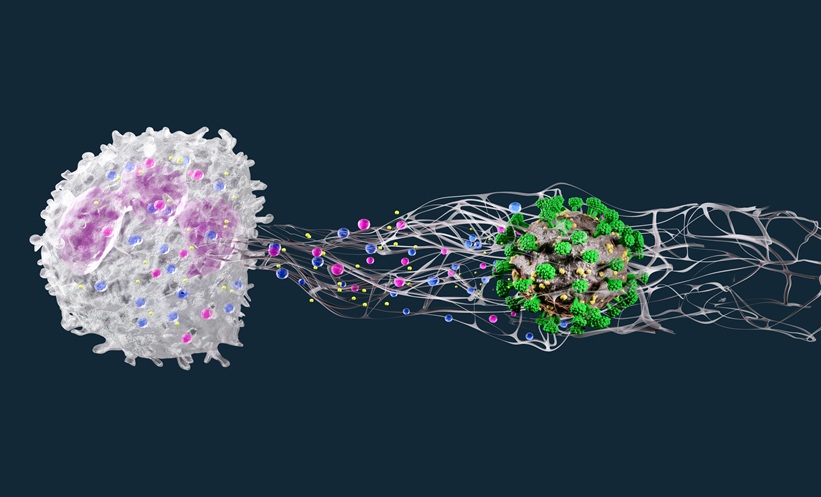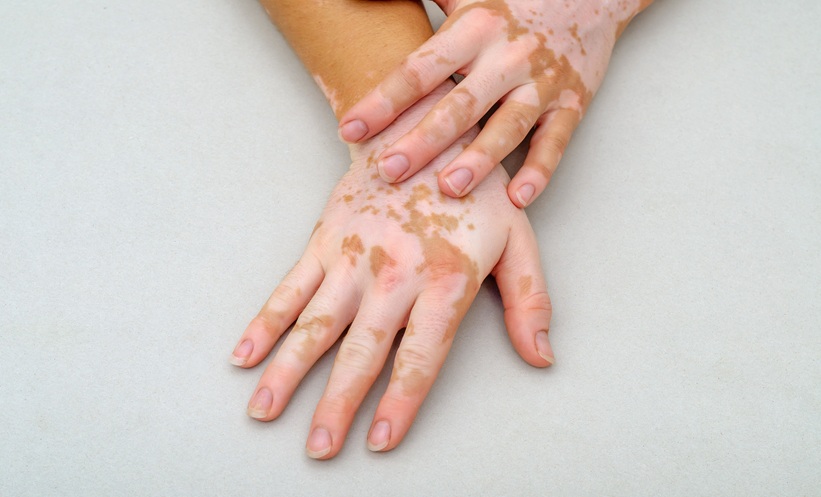Melanoma has a somewhat mystical air in dermatology, probably because it was long thought to be the most malignant skin tumour. Since the Scottish surgeon Handley proposed a safety margin of 2 inches corresponding to approximately 5 cm, this has been taken as a dogma for almost a hundred years. However, in the 1950s and 1960s, some surgeons used wider margins because the prognosis of most patients was very poor. This culminated in huge amputations, which alas, did not improve the patients’ prognosis. It was believed that any type of manipulation would set off metastases and some dermatology departments used liquid nitrogen to deep freeze the entire melanoma and surrounding tissue with a three-dimensional 5 cm margin.1 Incisional biopsies were strictly forbidden. This could also not improve the cure rates. It took a new generation of dermatologists and surgeons to recognise that the time of treatment was crucial, not so much the extent of surgery.2
Nail melanoma is usually claimed to be a rare type of acral lentiginous melanoma, and this statement is often used an excuse for the late diagnosis or frequent misdiagnosis. Large patient series of more than 100 patients with nail melanomas showed appallingly poor survival rates; however, their mean Breslow index was above 4 mm.3 Taking the slow progression of most nail melanomas into account, this lends strong evidence to a tremendous delay in the diagnosis and finally the therapeutic attempt. This led other authors to claim that nail melanomas, like presumedly other acral melanomas, were particularly malignant. A number of misconceptions prevail in nail melanoma, concerning its frequency and rarity, aggressiveness, diagnostic challenges, necessary tools for diagnosis, patient age, and treatment. This short essay tries to clarify some of these issues.
NAIL MELANOMA MYTH 1: NAIL MELANOMA IS SO RARE
Most publications on nail melanomas start with the claim that they are very rare and use this as an excuse for their high percentage of late diagnoses and poor prognosis. Ungual melanomas are not rare: 1.0–2.5% of all melanomas in Caucasian patients, according to the German Melanoma Registry 1.8% of cutaneous melanomas (Garbe, personal communication). However, the nail surface is much less than 1% of the body surface. Most ungual melanomas, particularly the pigmented ones, develop from the matrix, which is approximately one third of the whole nail region. Clearly, the nail matrix is a hot spot of melanoma development. A rough estimate would suggest that approximately 1–2% of the melanomas in light-skinned people arise in <0.1% of the body surface.
NAIL MELANOMA MYTH 2: UNGUAL MELANOMA IS A PARTICULARLY AGGRESSIVE FORM OF MELANOMA, HENCE THE PROGNOSIS IS OFTEN SO POOR
Nail melanomas represent a subdivision of acral melanomas. They all are diagnosed late because most patients and physicians, dermatologists included, do not look at the soles and palms, and even when they see a greyish-brown or even black area they do not think of melanoma. Patients often present with very large areas of palmar or plantar pigmentation known to them for years or even decades, and the reason for the consultation now is that a non-healing wound has developed. Late diagnosis and very late treatment at a high clinical stage, rather than a particularly aggressive type of melanoma, is the reason for the poor prognosis. Subungual location is not an independent poor prognostic factor.4
NAIL MELANOMA MYTH 3: UNGUAL MELANOMA IS PARTICULARLY DIFFICULT TO DIAGNOSE
Approximately three quarters of nail melanomas are pigmented (i.e., present with a longitudinal melanonychia). This is obvious for the patient and very easy to see in light-skinned individuals. However, even when the patients ask their physician about the brown streak in the nail, this is commonly dismissed as being nothing and the time for early and curative surgery is therefore often missed. Admittedly, the situation is more demanding in dark-skinned persons where nail pigmentation is the rule rather than an exception. Here, any brown band standing out by its colour, width, border, and internal structure (the so-called ‘ugly duckling’) is suspicious. The key to diagnosis, early treatment, and better survival rates is awareness.5
NAIL MELANOMA MYTH 4: IT IS DIFFICULT TO DETERMINE THE NATURE OF THE PIGMENT CAUSING THE LONGITUDINAL MELANONYCHIA
Human melanin is granular. Blood, fungal melanin, microbial pigments, and exogenous pigments can easily be ruled out. The granular human melanin is easily seen in a Fontana stain, whereby the free margin of the nail is clipped and stained for the argentaffin reaction. Blood is positive with the pseudocatalase (peroxidase) reaction and stains with patent blue. Fungal melanin is (usually) diffuse and there is often a reverse triangular pattern.6 Microbial and exogenous pigments can often be scraped off the nail surface.
NAIL MELANOMA MYTH 5: MELANIN IS DIFFICULT TO DISTINGUISH FROM BLOOD IN THE NAIL AND DERMATOSCOPY IS REQUIRED TO DIFFERENTIATE BLOOD FROM MELANIN
Human melanin reaches into the free margin of the nail, subungual haematoma does not. Dermatoscopy shows fine greyish or brown lines whereas subungual haematoma, which in fact soon becomes intraungual, forms large globules. It is even possible to distinguish the blood component from the melanin if a patient has both in the same nail.7
Blood globules are easily identified and differentiated from the fine lines of a melanin band in the nail, even with the naked eye.
NAIL MELANOMA MYTH 6: AGE IS NOT IMPORTANT
Age is an important factor for the diagnosis of nail melanomas. A melanonychia is benign in babies and children; usually benign in adolescents; probably benign in adults <30 years; suspicious in adults >30 years; probably malignant in adults >40 years; and usually malignant in adults >50 years. This means that all recently developed melanonychias in persons over 30 years of age are suspicious and have to be managed as if they were melanomas until proven that they are not. This does not mean that children cannot develop nail melanoma but they are exceedingly rare. Further, localisation of the melanonychia is important. Thumb and great toe are highly suspicious, index and middle finger are suspicious, and the other fingers and toes are less suspicious, but may also occasionally be the localisation of a nail melanoma. Patients with nail melanoma are generally older than those with benign melanonychia.8,9
NAIL MELANOMA MYTH 7: DARK-SKINNED INDIVIDUALS HAVE A HIGHER RISK OF DEVELOPING AN UNGUAL MELANOMA.
Individuals with dark complexion (e.g., people from an African, Asian, native American, or Indian background) have, in absolute numbers, as many nail melanomas as fair-skinned individuals. In people of colour, longitudinal brown striation is the rule rather than an exception (look for the ugly duckling sign). In Black people, the proportion of nail melanomas in relation to all cutaneous melanomas exceeds 20%, in Asian individuals it exceeds even 40%.
NAIL MELANOMA MYTH 8: TRAUMA IS AN AETIOLOGICAL AGENT OF UNGUAL MELANOMA
Although this cannot be ruled out with absolute certainty, the time lag between a (remembered) trauma and the ungual melanoma is usually far too short.
NAIL MELANOMA MYTH 9: A DARK MELANONYCHIA STRIATA IS INDICATIVE OF AN UNGUAL MELANOMA
The colour of ungual melanomas may range from jet-black to brown to virtually non-pigmented.10 In fact, most melanomas deriving from the matrix are melanotic whereas those originating in the nailbed are amelanotic.
NAIL MELANOMA MYTH 10: A MELANONYCHIA STRIATA WIDER THAN 5 MM INDICATES AN UNGUAL MELANOMA
Any melanonychia striata ranging from 1 mm to >20 mm may be seen in an ungual melanoma, just as in skin a melanoma may be under 2 mm in diameter.
NAIL MELANOMA MYTH 11: UNGUAL MELANOMA REQUIRES AMPUTATION AS ITS ADEQUATE TREATMENT
A comparison of different amputation levels in ungual melanoma did not show any difference in survival, whether it was ray amputation, metacarpal/metatarsal-phalangeal, interphalangeal, or distal phalangeal amputation.11 Wide local excision was demonstrated to have a better survival rate than amputation as shown in a comparative study. Worldwide, our approach of functional digit-preserving surgery is now accepted.12 Wide local excision is the treatment of choice for in situ and early invasive nail apparatus melanoma.
There are certainly more scientifically unproven issues concerning nail melanoma that are worth being critically studied.







